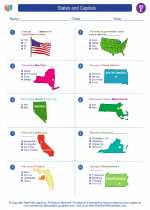Lake Michigan
Lake Michigan is one of the five Great Lakes of North America and the only one located entirely within the United States. It is the second largest of the Great Lakes by volume and the third largest by surface area, covering an area of approximately 22,400 square miles. The lake is known for its beautiful shoreline, diverse ecosystems, and significant impact on the region's economy and transportation.
Key Facts about Lake Michigan:
- Location: Lake Michigan is located in the northern United States, bordered by the states of Wisconsin, Illinois, Indiana, and Michigan.
- Formation: The lake was formed as a result of glacial activity during the last ice age, and its basin is the result of the glaciers' retreat.
- Ecology: Lake Michigan supports a wide range of plant and animal species, including fish such as lake trout, salmon, and perch, as well as diverse bird populations along its shores.
- Transportation and Trade: The lake has historically been an important transportation route for the region, supporting trade and shipping between the United States and Canada.
- Recreation: Lake Michigan is a popular destination for recreational activities such as boating, fishing, swimming, and beachcombing, drawing millions of visitors each year.
Study Guide:
To better understand the significance of Lake Michigan, consider the following study guide questions:
- What are the five Great Lakes, and where is Lake Michigan located in relation to the other lakes?
- How was Lake Michigan formed, and what geological processes contributed to its creation?
- What are some of the key plant and animal species that inhabit the Lake Michigan region?
- How has Lake Michigan historically influenced trade and transportation in the United States?
- What recreational opportunities does Lake Michigan offer, and how does it contribute to the local economy?
By exploring these questions and conducting further research, you can gain a comprehensive understanding of the significance of Lake Michigan and its impact on the surrounding region.
.◂Social Studies Worksheets and Study Guides Fifth Grade. States and Capitals
Study Guide States and Capitals
States and Capitals  Worksheet/Answer key
Worksheet/Answer key States and Capitals
States and Capitals  Worksheet/Answer key
Worksheet/Answer key States and Capitals
States and Capitals  Worksheet/Answer key
Worksheet/Answer key States and Capitals
States and Capitals 

 Worksheet/Answer key
Worksheet/Answer key
 Worksheet/Answer key
Worksheet/Answer key
 Worksheet/Answer key
Worksheet/Answer key

The resources above cover the following skills:
Geography: A student should be able to utilize, analyze, and explain information about the human and physical features of places and regions. A student who meets the content standard should:
Understand that a region is a distinct area defined by one or more cultural or physical features.